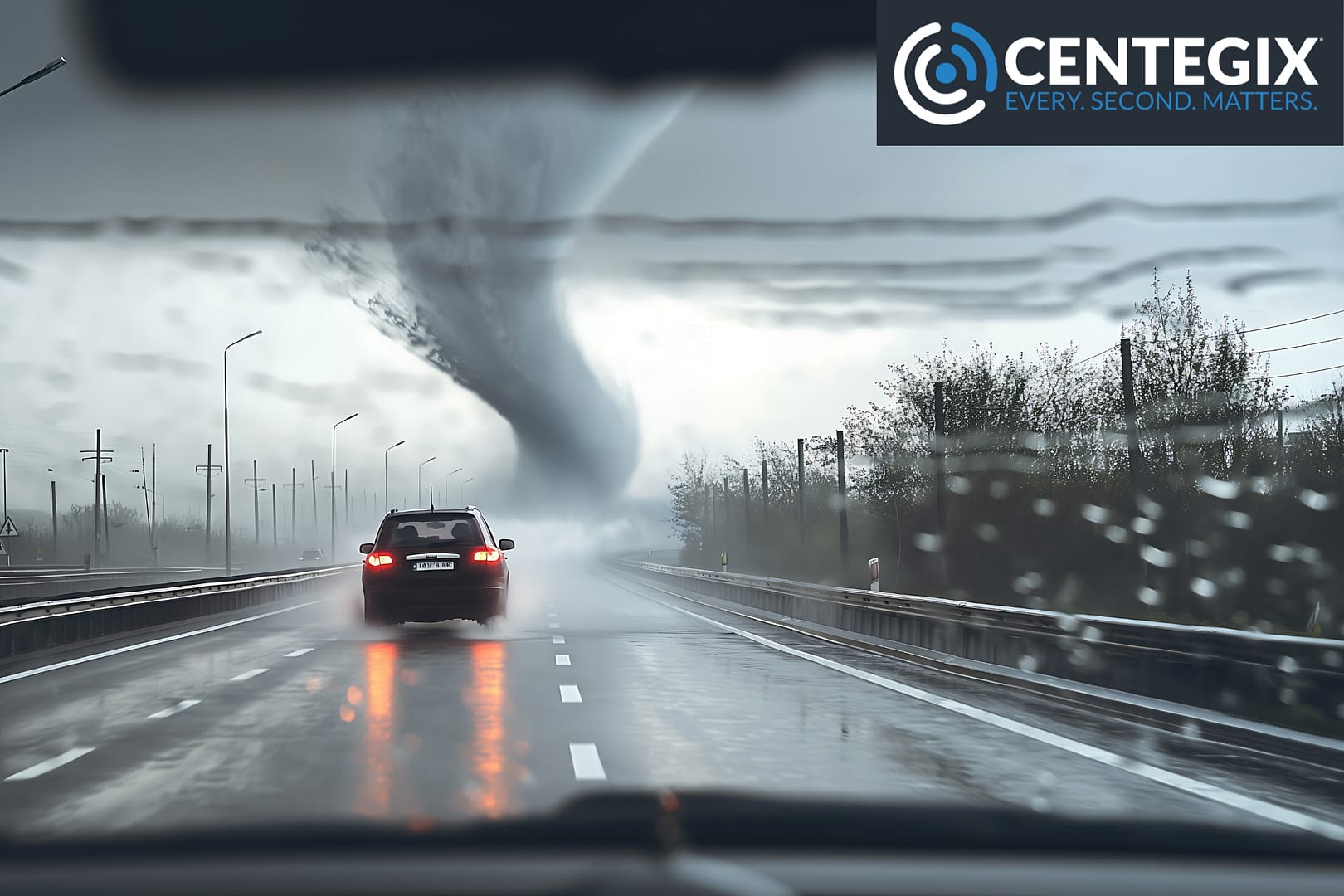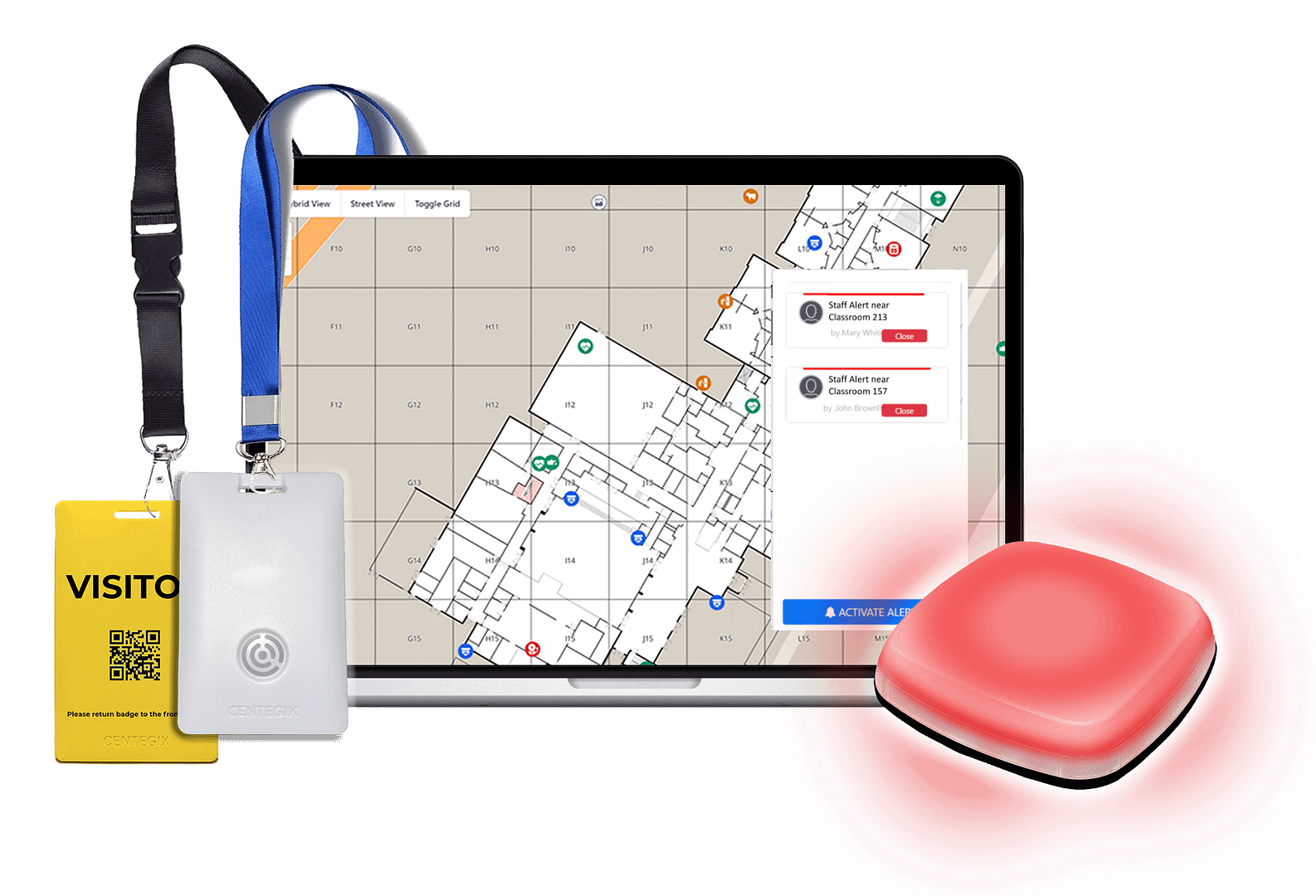Between 2019 and 2023, the number of weather events reported by the National Oceanic and Atmospheric Administration increased by 11%, and in 2023 alone, injuries caused by weather events increased by 124%. As weather occurrences such as heat waves, wildfires, tornadoes, and hurricanes continue to trend upward, healthcare facilities face another challenge in keeping their patients, employees, and communities safe and prepared.
When considering weather emergency response plans, it’s easy to silo the problem and look for solutions that have historically been used to handle these types of events. However, healthcare organizations can leverage technology cross-functionally and consider safety plans designed to mitigate violence in healthcare to prepare for weather emergencies and other unexpected situations.
What to Know about Weather Emergencies
According to the Centers for Medicare and Medicaid Services, reliable and timely planning for weather emergencies provides the foundation for effective emergency management. Since weather emergencies impact entire communities, emergency management can involve various medical and public health entities, including:
- health care provider systems
- public health departments
- emergency medical services, including search and rescue situations
- medical laboratories
- individual health practitioners
- medical support services
A carefully crafted, coordinated response is essential. According to best practices, comprehensive emergency management for healthcare facilities includes the following phases:
- Hazard Identification
- Hazard Mitigation
- Preparedness
- Recovery
- Response
Let’s explore each phase.
Hazard Identification
Healthcare leaders should carefully consider any potential hazards unique to their location that could affect their facilities, both directly and indirectly. Certain parts of the country experience unique weather phenomena. For example, healthcare leaders in the Gulf of Mexico must consider hurricane procedures, while leaders in places like California or Arizona must consider fire threats, excessive heat, and drought.
Another consideration is that indirect weather hazards could affect the community rather than the provider, impacting necessary utilities, supplies, or staff. Proper hazard identification requires careful consideration of the entire community, not just the healthcare organization.
Critical incident mapping allows healthcare leaders to locate and maintain safety assets and ensure all facility maps are up to date. Accurate, easy-to-access maps can help locate critical valves, power sources, and other facility infrastructure that may need attention during a weather emergency, such as a tornado or hurricane.
Hazard Mitigation
Hazard mitigation refers to measures that offensively or defensively reduce the probability or severity of harm in an event. During natural disasters, staff should be empowered with clear and practiced safety protocols that protect their coworkers and patients.
To mitigate hazards, healthcare leaders can ask themselves:
- Do staff members have a well-defined protocol for requesting immediate assistance when patient-to-staff ratios are adversely affected by a storm and resources are limited?
- Is there a streamlined and efficient system in place for notifying the entire campus if the facility needs to provide shelter during a tornado warning?
- Are staff able to request help without leaving their patients during severe weather conditions?
- In the event of an influx of patients, does the facility have an effective method for tracking additional on-site visitors?
- Do any current communication methods integrate with Public Safety Answering Points (PSAPs) in the event of downed phone lines?
- Is there a feasible contingency plan if weather conditions impact the primary plan?
- Can leaders quickly communicate a campus-wide weather emergency even if they’re off-site?
Comprehensive hazard mitigation efforts, including proactive staff education and training, will aid in reducing workplace violence and staff’s vulnerability to potential hazards. These activities come before any imminent or post-event timeline and are considered part of the emergency response.
Preparedness
Safety in healthcare—especially when mitigating the effects of weather events or workplace violence in healthcare—requires preparedness. A reliable safety plan will allow staff to continue quality patient care, even if weather disasters impact essential services.
To ensure preparedness, healthcare leaders analyze basic facility information, current or future hazards, and the ability to continue providing care and services during an emergency. This analysis drives tailored staff training, resource allocation, safety procedure testing, and any necessary safety plan revisions.
Response
Response refers to measures taken immediately before, during, and after an impending threat to address the immediate and short-term effects of the emergency. An effective safety plan has clear, well-tested response procedures. Establishing clear guidelines empowers healthcare workers to prepare for, respond to, and recover from weather emergencies.
Here are some ways to improve your severe weather response:
- Establish clear procedures in the event of a power, Wi-Fi, or cellular service outage.
- Share digital facility maps with local EMS responders in advance.
- If you have a rapid response team, consider adding additional resources to cover a potential increase in requests for help.
Recovery
Post-emergency, rapid recovery of day-to-day operations ensures you continue to provide the best care possible to your community. Common barriers to a quick recovery include:
- staffing challenges
- resource allocation
- reunification
After a natural disaster or weather emergency, healthcare leaders can use collected data to identify gaps in processes and procedures that impact safety in healthcare. By utilizing technology that provides comprehensive, detailed reporting, leaders can make data-driven adjustments that will significantly impact future emergencies.
Innovative Safety Technology During Weather Emergencies
Weather emergencies are unavoidable, but healthcare facilities can utilize innovative technology to mitigate the danger and improve safety in healthcare. CENTEGIX® is honored to provide hospitals with tools to reduce violence in healthcare and can serve as the foundation for your facility’s multi-layered safety plan. The CENTEGIX Safety Platform™ is an innovative and comprehensive hospital safety solution designed to accelerate response and can empower your staff with the tools they need during weather emergencies.
Reliable Alerts
During weather emergencies, Wi-Fi and cellular signals are often unreliable. CENTEGIX CrisisAlert™ is a wearable duress button that connects to private LoRaWAN and Bluetooth networks so your staff will never have to worry about a lack of signal—even during a power outage.
The CrisisAlert wearable badge is an easy, rapid way for staff to request help to the exact location of the emergency. Whether staff are providing care in patient rooms, working in the emergency bay, or walking in the parking garage, CrisisAlert delivers 100% full-campus coverage.
In the event of an extreme weather emergency, CrisisAlert can initiate a lockdown with visual and audio alerts so the entire campus is made aware of the danger. With single-button activation, staff have an easy and reliable way to request help to any situation, and will never have to leave patients or worry responders will arrive to the wrong floor. Additionally, leaders can use their responder app to notify their teams of a campus-wide emergency, even if they’re remote.
Accessible Digital Mapping
EMS coordinators, first responders, and campus administrators must have access to the same updated maps to ensure a coordinated response. CENTEGIX Safety Blueprint™ provides hospitals and responders with digital, multi-layered campus maps—including the location of all safety assets.
Safety Blueprint is highly customizable and can be updated as necessary, ensuring staff and first responders always have correct and current information. When facilities experience a weather emergency that requires evacuation, Safety Blueprint can display evacuation routes to get everyone to safety quickly.
When planning for emergencies and promoting safety in healthcare, Safety Blueprint serves as a single source of truth for asset management and upkeep, informing healthcare leaders when certain assets are scheduled for maintenance or replacement.
Comprehensive Situational Awareness
In any emergency, the greater the number of variables you can account for, the better your response will be. CENTEGIX Safety Platform helps bolster situational awareness through features like Incident Activated Video (IAV) and allows responders to account for everyone on campus with solutions like CENTEGIX Visitor Management.
In an emergency, staff and patients are not the only ones that need protection in weather emergencies. Healthcare organizations receive a host of different visitors, such as patients’ families, vendors, and contractors. Those visitors must be included in your organization’s safety plan. The ability to pinpoint the location of each visitor in your facility can be the difference between a successful evacuation and a disaster.
CENTEGIX Visitor Management enhances administrators’ supervision of hospital traffic by logging every visitor on campus. The Enhanced Visitor Management feature is capable of locating all guests, volunteers, and contractors, in real-time, through digital maps.
Safely Weather the Storm with CENTEGIX
Empower your healthcare organization with the tools you need to rapidly respond to emergencies and improve safety in healthcare by partnering with CENTEGIX. CENTEGIX is an industry leader in wearable safety technology with over 600,000 badges in use. Leaders in over 12,000 locations nationwide trust CENTEGIX’s innovative safety solutions to empower and protect their people.
Click here to see how CENTEGIX can reduce violence in healthcare and protect your healthcare facility during weather emergencies.












